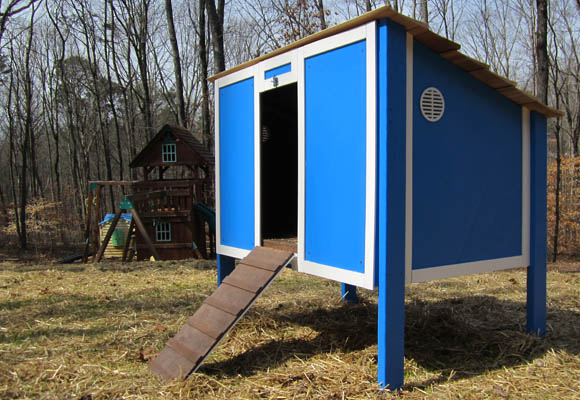Choosing Chicken Coop Plans and the Challenge
No matter where you look on the internet, if you perform a quick online search for “chicken coop plans”, you will be flooded with thousands of available options. There are different sizes, shapes, materials, styles, and functions to meet your every need. Because of this, it is important to have a clear understanding of your needs before you start researching chicken coop plans to build a chicken coop. The four factors below make the foundation for your planning process.
Total Size Need for Your Chicken Coop Plans
If you were building a house for your family, one of the first things you’d look for is space. That is just as important when you prepare to build a chicken coop too. According to LivingHomeGrown.com, a free-range chicken only requires about two or three square feet per bird, while chickens that remain cooped need approximately ten square feet each. There is a handy calculator from Countryside Farmers that can be used for a quick estimate. If you only plan to have a few chickens, a small or portable ark chicken coop might work for you. However, if you plan to house six or more chickens, you’ll need to expand accordingly. This step is critical to ensure the comfort of your flock, as well as to ensure healthy and regular egg laying.
Chicken Coop Plans with Ventilation
In addition to size, you need to ensure your DIY chicken coop properly circulates fresh air. Especially in a warm or hot climate, poor ventilation can lead to discomfort and health problems for your flock. Plus, an unventilated chicken coop smells awful, not to mention the health-diminishing bacteria that thrive in warm stuffy conditions! Even if you live in a cooler climate, ventilation is important. As illustrated by Better Hens and Gardens, chickens can produce a lot of heat, moisture, and ammonia so regardless of temperature, ventilation is needed to address this.
Light Sources for your Chicken Coop Plans
The third thing you need to incorporate into your chicken coop plans is a good lighting strategy. Ideally, your coop will have a source of natural sunlight factored into the building plans. To ensure that you maximize the natural light, you will need to consider both position and angle toward the sun. If natural light is not an option, you will want to consider adding an artificial light source to supplement the daylight hours for your flock. The Prairie Homestead outlines a few of the pros, cons, and considerations of artificial lighting.
Where to Put the Feeding Setup in Your Chicken Coop Plans
The final consideration when looking for plans on how to build a chicken coop should be your feeding configuration. Quantity and position of feeders can make a big difference in the time it takes to feed your flock. You will want to consider the number of chickens, quantity of feed, and your anticipated feeding schedule when deciding where to put your feeders. Be sure to look for plans that will help you iron out the details.
There is no need to be overwhelmed by options when you start to plan to build a chicken coop. Consider the four factors above and you will be able to find the perfect coop that fits in your price range and meets your needs.


